Istanbul is a magnificent beast.
Thirty-nine districts, 15 million people, and 1700-plus years of history – it’s still difficult for me to wrap my head around a city of this scale.
I never know where to begin with Istanbul. And yet every time I arrive, I somehow feel instantly at ease. Turkey’s biggest metropolis has a way of encircling you, sweeping you up and taking you along for the ride. For me, it’s one of those places where it’s best to relinquish expectations and anxieties and just go with the flow.
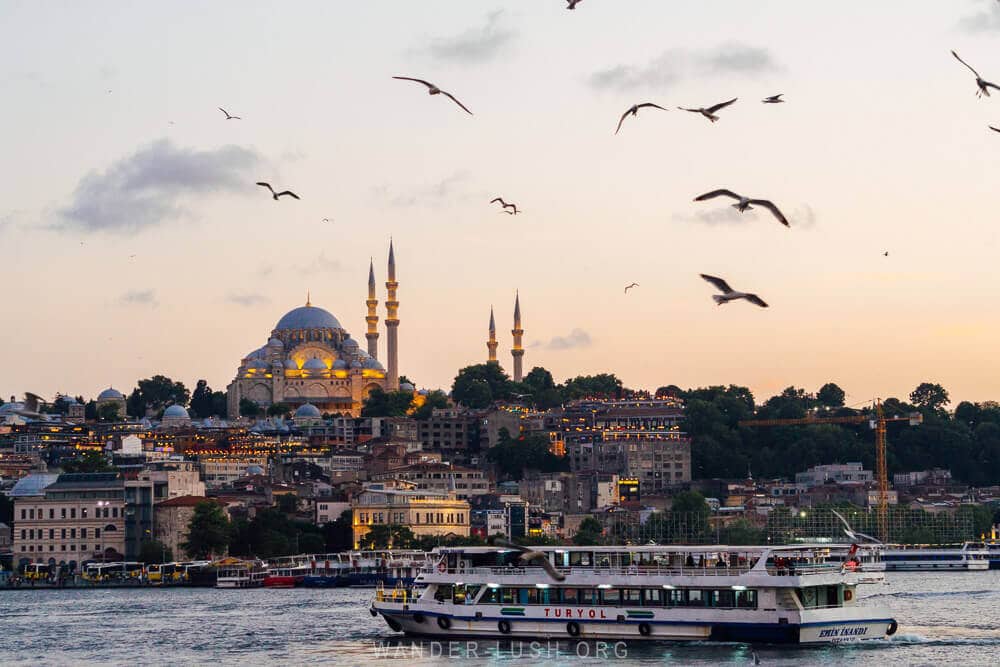
That’s easier said than done, and there are countless tidbits I wish I had known before I visited Istanbul for the first time back in 2019. On my recent re-visit, there were many more things I noticed for the first time.
I struggled to whittle this list down to a digestible size – not because travelling in Istanbul is particularly complicated or difficult, but because when you’re dealing with a city of such incredible breadth and depth, there’s just so much to talk about.
Here are 42 Istanbul tips that I think every traveller will benefit from, including cultural quirks, itinerary planning tips, logistics hints, and common faux pas.
- Also read: The perfect itinerary for 4 days in Istanbul
Please note: This post contains affiliate links, meaning I may earn a commission if you make a purchase by clicking a link (at no extra cost to you). Learn more.
Istanbul quick links
- Istanbul airport transfer: Private transfer from Istanbul Airport or Sabiha Gokcen (from $27)
- Where to stay in Istanbul: Hostel Le Banc (budget); 38 Hotel (mid-range); Hotel Empress Zoe (boutique); Ecole St. Pierre Hotel (luxury)
- Istanbul Official E-Pass: Pre-purchase online here
- Skip the line: Blue Mosque & Hagia Sophia Small-Group Tour (from $40)
- Best Istanbul food tour: Taste of 2 Continents (from $100)
- Top-rated Istanbul city tour: Best of Istanbul in 1 Day (from $60)
- Turkey car hire: Find a low-cost rental on Local Rent (from 28€/day)
Essential Istanbul travel tips
Starting with the basics, here are answers to some of the burning questions I had before my first visit to Turkey (Türkiye) and Istanbul.
1. Avoid visiting in summer
Never underestimate Istanbul’s magnetism. The city pulled in more than 14 million tourists in 2019 (including me), and on my most recent trip in 2022, it felt just as crowded as it had been three years earlier.
I’m willing to bet that most people visit Istanbul during the summer months – June, July and August. This feels a bit hypocritical because I myself have visited Istanbul twice during summer – but because I did, I know what peak season is like.
Istanbul’s climate is quite mild relative to other cities in the region. Temperatures might not go too far beyond 30 degrees Celsius in the shade, but the sun is scorching hot, and it’s very dry.
Aside from the oppressive heat, there are the summer swarms to contend with. (You haven’t really experienced a queue until you’ve stood in line for the Hagia Sophia on an August afternoon.) There are crushing crowds at every landmark during summer, and that gets old pretty quickly. On top of that, accommodation prices are noticeably higher and it can be challenging to get a reservation.
The best time to visit Istanbul is during shoulder season, spring (April to early June) or autumn (mid-September to the start of November). For something different, consider visiting Turkey in winter, when snow covers Istanbul and the city’s charm-o-metre is off the charts.
Take note of the dates for the Holy Month of Ramadan (usually around March-April-May, but it changes every year), which influences the way the city operates.
2. You need at least three days to do Istanbul justice
However many days you give yourself in Istanbul, it will never be enough. You will always feel like you short-changed yourself – there’s always one more neighbourhood to explore, one more ferry trip to take, one more museum to visit, one more restaurant to try…
Three days is the bare minimum for a first-time visitor, but you could easily stay for a week or more.
I recently spent 10 days in Istanbul and found it was a good amount of time to see the city at a relaxed pace. I stayed in the centre for that entire time, though I did have a few ‘down’ days to work. There are dozens of day trip opportunities to break things up if the city gets to be too much.
One of the highlights of Istanbul is the food, so you’d do well to measure the duration of your stay in meals eaten rather than nights slept! Six square meals (and a couple of ‘spread breakfasts’) is ideal for indulging in the best of Istanbul’s food scene.
Plan your time with my 4-day Istanbul itinerary, which covers the must-sees and a few local gems.
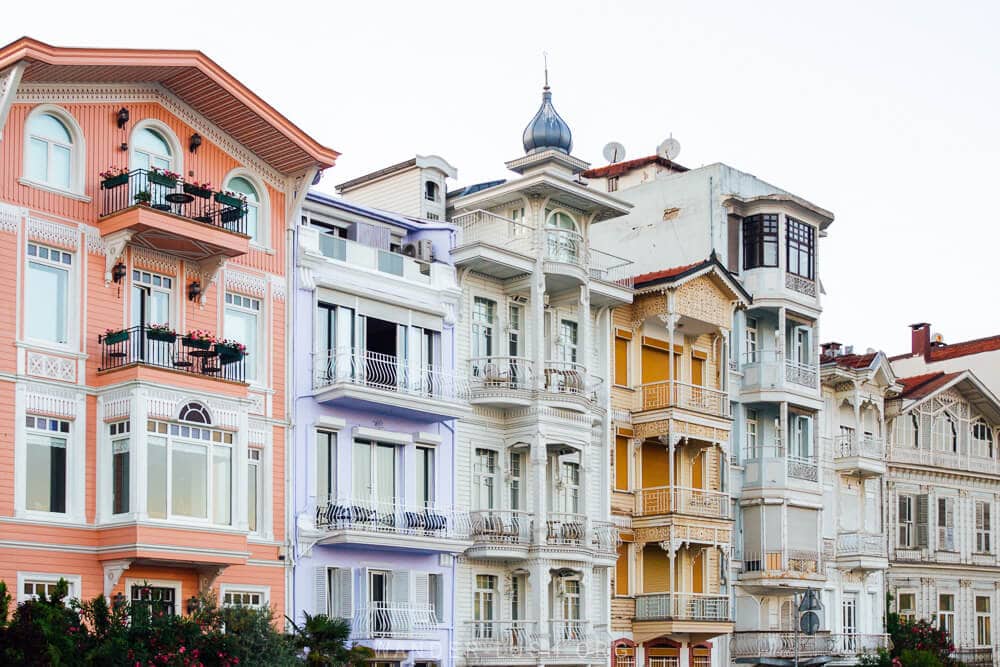
3. Save time (and maybe money) by applying for an e-visa
Most nationalities require a tourist visa to enter Türkiye. The country’s e-visa scheme, which launched in 2013, is available to citizens of 40+ countries, including the States, Australia and Canada. (EU citizens do not need a visa.) A standard multiple-entry visa is valid for a stay of up to 90 days with 180 days validity from the date of issue.
Visa on arrival (VOA) is also available, but if you’re flying in, it requires queueing at the airport – and because of the high volume of flights arriving at IST particularly, it can be a long wait. For some nationalities, it’s also more expensive – 10 USD dearer on average compared to the e-visa according to the official fees (though for US passport holders, VOA is cheaper).
Applying for a Turkish e-visa requires completing a simple online form. The website has English-language support and international card payment, but be warned that sometimes it’s a bit glitchy. Both times I’ve applied, my visa has landed in my inbox almost instantly (within the hour). Be sure to print off the A4 piece of paper to show at immigration.
There are copycat sites out there – the official e-visa portal is located here.
I have never been asked for proof of onward travel or a hotel reservation when entering Turkey. If you want one or both for peace of mind without making an actual booking, then I suggest using OneWayFly.
4. Travel insurance is a must
Travel insurance is mandatory for all foreign visitors to Turkey. Again, you might not be asked to show proof of insurance if you’re travelling on an e-visa (I haven’t), but rules are rules nonetheless.
Istanbul is generally regarded as a safe city, but pickpocketing and crime do occur. More importantly, local health care can be expensive, so it pays to be covered in case of accident or unexpected illness.
For single-policy or annual trip insurance, I recommend HeyMondo. Get 5% off your policy when you sign up using this link.
Read up on these Istanbul safety tips before you go.
5. Use the Havabus (Havaist) shuttle to travel to/from the airport
Update: Since publishing this guide, both Istanbul airports now have an underground metro service. I would definitely look into this option – avoiding traffic could be a real time-saver. Here are more details.
Havabus is a terrific service for travelling between Istanbul’s airports (yes, there is more than one – see the next point) and the downtown area. Shuttles operate 24/7, with departures in both directions every 30-60 minutes.
Tip: At Sabiha Gokcen airport, the shuttle is called Havabus and at Istanbul Airport, it’s called Havaist. I have used both – they operate in much the same way, but they have separate websites for checking the schedule (here for Havabus and here for Havaist).
When you land in Istanbul, look for the airport bus signage. At Sabiha Gokcen, the bus stand is located on the other side of the car park directly in front of the arrivals terminal. Tickets are purchased using cash on the bus and cost 37.50 TRY (around 2 USD) per person to go to Taksim.
If you prefer a private transfer, airport cars are very well priced (from $27 to/from either airport). Pre-book a door-to-door airport transfer online here.
Eventually the Istanbul metro will extend to IST Airport, but the line has not been completed yet.
6. There are multiple airports in Istanbul – don’t front up at the wrong one!
Istanbul Airport (IST) is the city’s largest and busiest international airport. Located on the European side in Arnavutkoy, 40km / 45 minutes’ drive from Taksim Square, it is sometimes referred to as ‘Istanbul Grand Airport’ or IGA. If you’re flying with Turkish Airlines or from Europe, there’s a high chance you will be landing at IST.
A second airport, Sabiha Gokcen International Airport (SAW), receives flights from the Middle East (Emirates, Qatar) as well as Turkey’s own Pegasus Airlines. It is located on the Asian side, 40km / 60 minutes’ drive from Taksim Square.
A third airport, Ataturk Airport, closed in 2019.
The two airports are 80km apart and it takes at least 75-90 minutes to travel between them. There are shuttle buses, but if you show up at the wrong one for your flight, there’s a good chance you’ll be left high and dry. Triple-check your reservation and make sure you show up at the correct airport.
We got caught out with this on our first trip and rolled up at the wrong airport for our flight back to Australia. Luckily we had come a day early with the intention of staying the night at the airport hotel, so we still made our flight.
You can use Havabus/Havaist to get back to the airport from the city, too. Buses depart from Taksim Square. Take the metro to Taksim and follow the exit towards Taksim Gezi Park. From there, the station is a short walk (you will see the coaches waiting and two ticket booths on the footpath).
Buses to both airports depart from the same area, so again, triple-check you’re hopping on the right one!
7. Pre-book your accommodation
Hotel platform Booking.com doesn’t work in Turkey, so if this is your preferred way to find accommodation, you’ll need to do your browsing and booking before you arrive. (This can be overcome by using a VPN of course.)
Pre-booking is essential for peak-period travel as properties do fill up and prices can skyrocket for last-minute reservations.
I normally use Airbnb in Istanbul for the simple reason that I prefer to stay in local neighbourhoods. Sisli is my district of choice: It has great access to public transport, fantastic local restaurants, and a more relaxed vibe.
8. Card is widely accepted, but it helps to carry cash
Ninety-nine percent of venues and shops in Istanbul accept credit/debit cards, including Visa and Mastercard, as well as contactless pay. For small markets and convenience stores, local restaurants, bars and taxis – and when dipping into the wonderful world of Istanbul street food – you’ll need cash.
Many smaller shops in Turkey have a primary limit set on card purchases, meaning you need to meet a certain threshold if you want to pay with a card. In these instances, cash is necessary. Small bills also come in handy for tipping (more on that later).
I suggest withdrawing cash when you first arrive and reserving it for smaller purchases and tips. Check out my Istanbul Travel Budget to learn more about budgeting for your trip and the cost of common items and services.
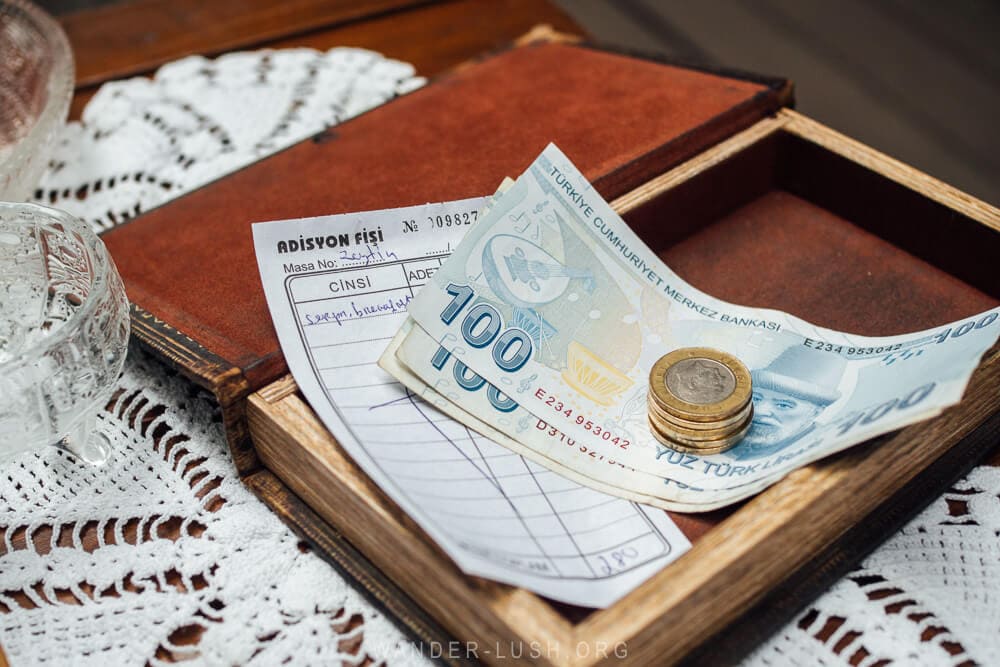
9. Most ATMs in Turkey charge a fee
ATMs are ubiquitous in Istanbul and most of the time, you’ll see half a dozen different cash machines clustered together. Majority charge a withdrawal fee – up to 5% for some banks – and have a transaction limit of between 3000-5000 TRY.
The only no-fee ATM we could find was Ziraat Bank. It’s red with a distinctive wheatear logo. We also used HalkBank, which did not charge us a withdrawal fee, but did hit us with a 13 TRY fee on Wise.
Banks change their fee structure regularly, so you might need to experiment with a few different machines. If the bank does charge a fee – either a flat fee or a percentage – this should always be displayed on the screen before you finalise the transaction.
On our first trip to Turkey, we had issues with our Australian bank cards not being accepted. This time around, I used my Wise card without any issues. I found the best method for withdrawing cash was to exchange stored currency to Turkish lira within the Wise app, then withdraw lira from the ATM.
Wise is great for international travel and offers very competitive exchange rates – if you don’t yet have an account, you can sign up here.
10. Buying a SIM card in Istanbul is easy, but your options are limited
Open WIFI is not readily accessible in Istanbul, which makes buying a local SIM card more or less a necessity.
If you’re not a Turkish citizen and you don’t hold a residency permit, you’ll find you have limited options when it comes to buying a SIM. Low-cost packages are not available to foreigners and most telcos only offer one standard tourist package.
After doing a bit of research, we settled on a Vodafone SIM. Vodafone only has one option for tourists, which includes 20GB of data, calls and texts, and unlimited access to Whatsapp. We paid 350 TRY (around 19 USD).
The process of buying a SIM is very straightforward and only took us about 15 minutes. You need a hard copy of your passport for registration, so make sure you’re carrying it with you. The tourist SIM automatically expires after 60 days.
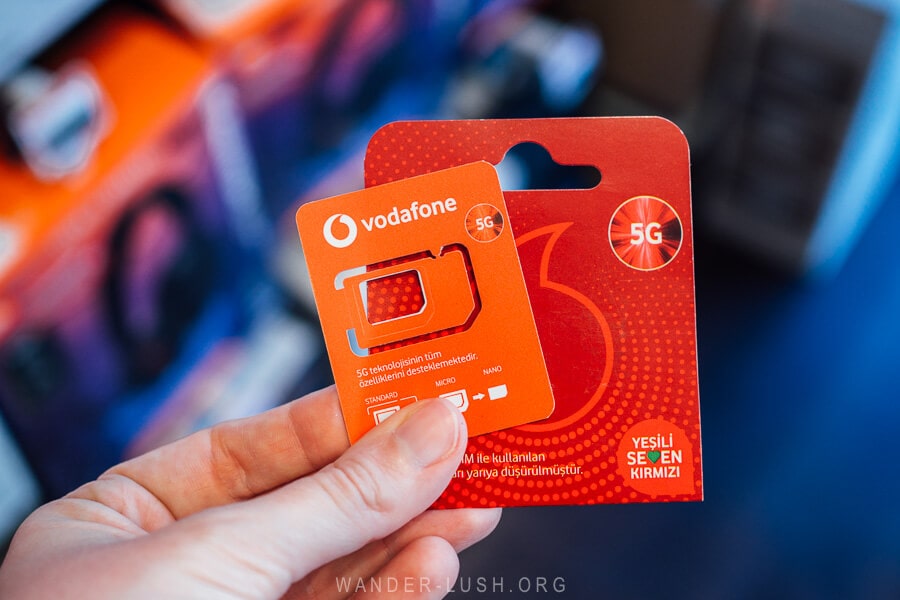
11. The public transport system is phenomenal
If you’re considering hiring a car in Turkey to continue your travels beyond the city, make sure you pick it up on the outskirts of the city (possible when using a company such as Local Rent). The traffic is maniacal and I would not recommend driving in the city centre.
There’s no reason to drive a car in Istanbul, anyway: The public transport system is affordable, easy to use and reliable. Between the metro, trams, buses, ferries, and my personal favourite, dolmus vans, you can get anywhere you need to go with ease. Google Maps works well for planning your route.
Dolmus minivans – Turkey’s answer to a marshrutka – are a fun experience. The name literally means ‘stuffed’ because passengers are squeezed in like sardines. Keep in mind that the entire transport network is very busy and squishy during peak hour, especially in the morning between about 8-9.30am.
When boarding a bus in Istanbul, enter through the front door and tap your IstanbulKart on the electronic reader. If the bus is very full, you can board through the back doors and pass your card down the line for someone at the front to swipe.
12. You need an IstanbulKart transport pass
On our first trip to Istanbul, we walked a lot and relied on buying single-journey metro tickets for longer trips. This time around, we re-learned that only certain ticket machines inside the metro dispense single tickets – and usually they are the ones with an obnoxiously long line of people.
An IstanbulKart is an essential purchase if you plan to use public transport. There are several different cards available – all are valid for the metro, buses, trams and ferries. The so-called Anonymous IstanbulKart is recommended for tourists and is sold at kiosks and newsstands and inside metro stations for 50 TRY (non-refundable). You can use one card for multiple people (up to five people).
A single IstanbulKart fare costs 7.67 TRY. Compared to the 15 TRY for a single-journey ticket, you’ll end up saving almost 50% on every trip.
Note that metrobus fares vary according to the number of stops travelled, but metro fares are flat. Transfers are charged at 5.49 TRY for the first transfer and 4.17 TRY for the second leg.
Find more information about the public transport system here.
13. Use an app for taxis in Istanbul
Istanbul’s cab system is similarly well organised, with three types of taxis at different price points. Yellow taxis are standard and have the lowest fares (6.3 TL/km plus a switch-on fee of 9.8 TL). Turquoise taxis are a premium service and cost 20% more, while black taxis (always luxury vehicles) are twice as expensive as yellow taxis.
Taxis are metered, so it’s generally considered safe for a tourist to hail a cab on the street. However, scams do happen, which is one of the reasons most people (including many locals) prefer to use an app.
After numerous legal battles, Uber re-launched in Turkey in 2021. We used it on several occasions and found the service to be good – short wait times, friendly drivers, and competitive fares (we always paid in cash rather than hooking up our credit card – make sure you are carrying small bills).
Uber alternatives include BiTaksi and Itaksi. The former has POS contactless payment, which is great for paying by card.
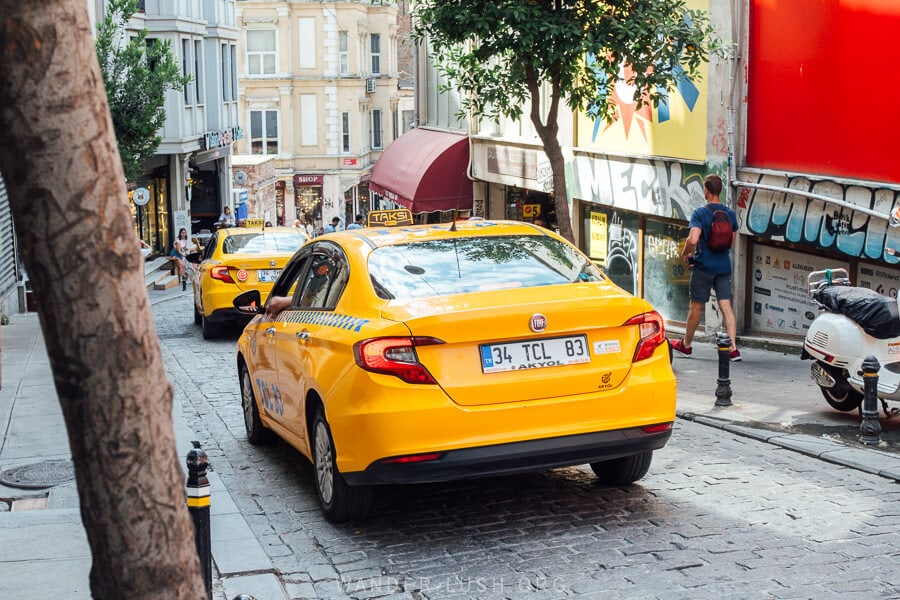
14. Tipping is standard
Tipping is customary in Turkey, with 10% being the standard mark for restaurants and bars. For taxi drivers, it’s normal to round up to the nearest lira when paying in cash.
Of course you should only tip if you’re satisfied with the service. We found the quality of customer service in Istanbul to be pretty good across the board, with the exception of one chain cafe where we had a terrible experience.
Tipping is slightly higher for other service providers: 10-20% goes to your tellak or natir at the Turkish baths, and to your hairdresser or barber.
15. Can you drink the tap water in Istanbul?
This is a rhetorical question, because I’m still not sure what the correct answer is! Locals will warn you off tap water while at the same time, the government is running campaigns to encourage more people to drink from the faucet.
From what I understand, Istanbul tap water was undrinkable a decade ago. Infrastructure improvements (and the addition of chlorine to the water stream) have made tap water safe to drink, but many people still prefer to drink bottled water.
If the building you’re staying in has old, rusty pipes, it might be best to give tap water a wide berth. Try a small quantity and see how it sits with you.
16. Don’t flush your loo paper
Istanbul’s pipes are a bit sensitive, thus most restaurants, cafes and hotels request you place toilet tissue in a bin rather than flushing it down the loo. If this is the case, you’ll likely see a sign and a strategically placed wastepaper bin. If in doubt, don’t flush it.
17. If you need a bathroom, head to the nearest mosque
After chasing after non-existent bathrooms in malls and metro stations, I finally cottoned onto this little Istanbul tip: There are public toilets attached to most mosques and in my experience, they are almost always cleaner than public bathrooms elsewhere. Pan toilets are common. Men’s rooms are marked with bay, and women’s with bayan.
Some bathrooms are free to use, while others charge a small (1-2 TRY) fee. Another good reason to carry some small bills or coins with you.
18. Sip ayran to keep your tummy happy
Ayran is a savoury yogurt drink that has its roots in Turkey, but is popular around the region (I developed my ayran addiction several years ago in Bosnia and Herzegovina and have been sipping it ever since). It’s not too creamy, not too watery, and has just a hint of salty effervescence.
Because it’s yogurt, it’s full of good bacteria that do wonders to keep your gut in balance. Just as you might drink lassis in India, you can drink ayran in Istanbul to help ward off any potential food or water-related bugs.
Food poisoning definitely does occur in Istanbul, so watch what you eat and try to consume street food earlier in the day when it’s fresher (especially fish wraps and seafood).
People drink ayran with breakfast, lunch or dinner, and it is served at virtually every restaurant in Istanbul – either in little plastic tubs or from a fountain. Always go for the fresh option when it’s available: It’s light and aerated and extra delicious, presented with a big scoop of yogurty foam on top.
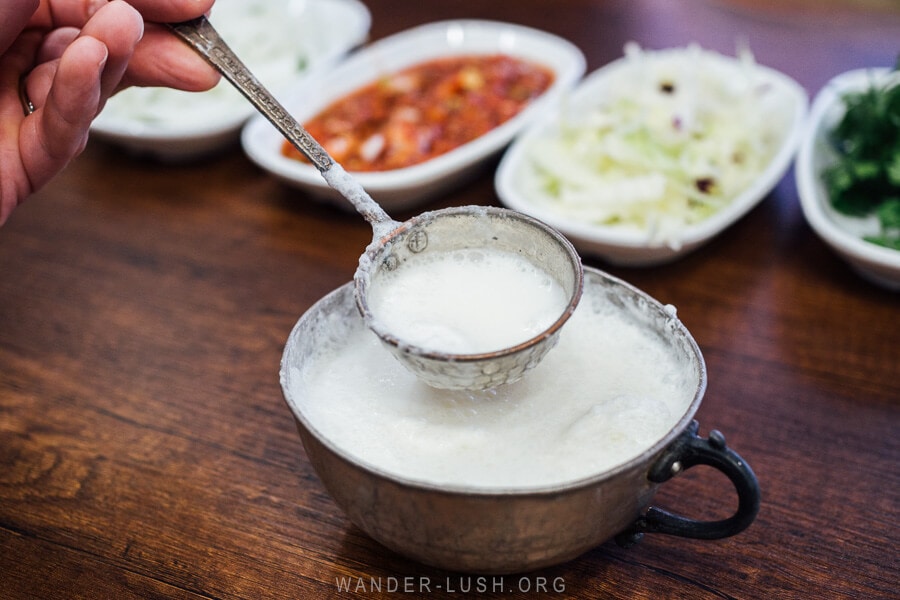
19. Drinking is common, but alcohol is not ubiquitous
The most popular alcoholic drinks in Istanbul are beer, wine and raki, a powerful spirit distilled from grapes or other fruits. Not all restaurants serve alcohol, however, and when you make your way over to the Asian side of Istanbul (which is noticeably more conservative), you’ll find that only a handful of establishments are licensed.
If you prefer to BYO, tekels are Istanbul’s answer to bottle shops. They normally sell a selection of local bottled beers and Turkish wines along with soft drinks, snack foods and cigarettes. It’s illegal to sell alcohol within 100 metres of a mosque or a school, so you won’t find any tekels in some neighbourhoods.
Sales are restricted to certain times of day – you cannot purchase drinks from a bottle shop between 10am and 6am (there are no restrictions on restaurants and bars, though). Alcohol is served as normal during Ramadan.
Excessive drinking is taboo in Turkish culture. Raki, the national drink, is a social beverage consumed slowly with food. It has aniseed notes and is sometimes served over water and ice, which gives it a milky colour.
If you want to try raki, head to a meyhane (meze bar), where alcohol is served with small places of food (also see point #26 on this list). You can order a small 350 mL bottle or a shot (~40 mL). Start slow – some rakis are 80-90 proof.
20. English is widely spoken (sort of)
The number of Turkish people who speak English is somewhere between 15-20%. Of course the rate is much higher in Istanbul, but still, English is not as widespread as you might imagine.
We found a bit of a paradox here: In big shops and phone stores, very little English was spoken, while we encountered staff who spoke perfect English in small restaurants and humble bakeries.
The bottom line is that it’s a bit of a mixed bag, so be prepared to sign and mime your way through some situations. Of course it helps to have some simple Turkish under your belt – knowing a few basic phrases can help to smooth things over.
Istanbul quirks to know before you go
Here are a few unusual quirks that tripped us up in Istanbul.
21. Pharmacies are hard to find
Turkey differentiates between ‘pharmacies’ and ‘cosmetic stores’ in a way that I’ve not noticed in any other country. The latter sells beauty and health products, but there is no pharmacist on staff and nowhere to buy over-the-counter medications or prescription meds.
Chains such as Watsons, Rossmann and Gratis are classified as ‘cosmetics stores’. If you need anything more serious than paracetamol or a revitalising face mask, you need a pharmacy or eczane.
Eczanesi are more difficult to come by. That’s because there are no chain pharmacies in Turkey. All pharmacies are small and owner-operated by a pharmacist – essentially mom-and-pop shops. You won’t find them in malls, only on the streets. Look for the ‘eczanesi’ sign in the window, and when using Google Maps, search for ‘eczane’ rather than ‘pharmacy’.
Pharmacies are worth hunting down if you need them: Many medicines are freely available in Turkey without a prescription, and prices are almost always cheaper than elsewhere in Europe. You do have to ask around, though, as every pharmacy has different stock and different generic brands. My partner spent several days searching for his medication and after asking at a dozen eczanesi, he finally found what he was looking for at a quarter of the price it is in Georgia.
22. Hand cologne is a thing
Istanbulites were sanitising their hands long before it was cool. The first time we had our hands doused in hand cologne by a friendly waiter, we assumed it was hand sanitiser – but no, this tradition far predates the pandemic.
Kolonya harks back to the days of the Ottoman Empire when a pleasant smelling liquid was sprinkled on guests’ hands as they would enter or exit private homes, hotels or hospitals. Today it’s widely used in restaurants after you pay the check. Some places have a little bottle on the table next to the salt and pepper shakers.
Scented with jasmine, lemon, rosewater or dark spice, a dash of hand cologne leaves your paws smelling fragrant fresh. Unlike hand gel, kolonya is very thin and watery – a little bit goes a long way. And because it’s ethanol-based, it does act as a disinfectant as well.
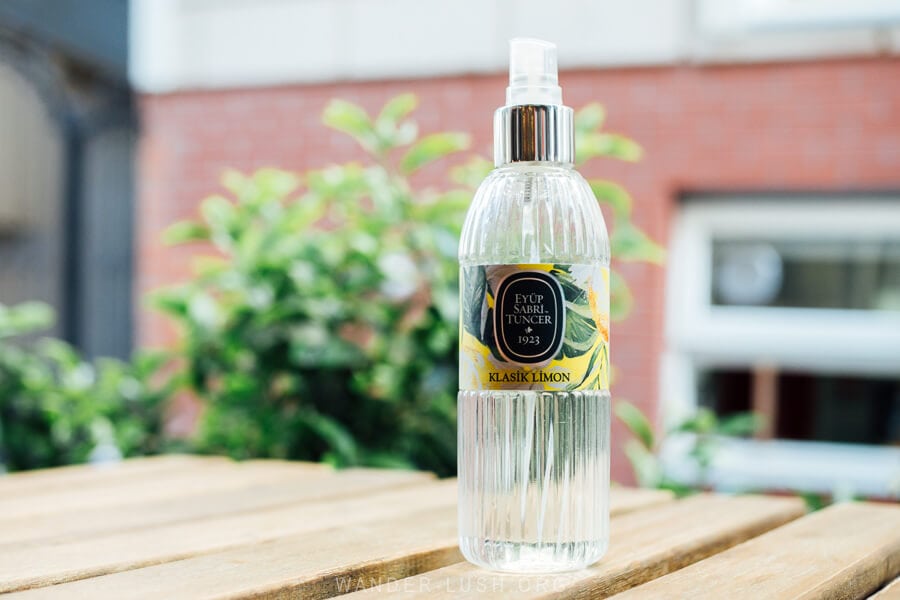
23. Don’t be surprised if you get asked for your phone number
Grocery stores, cosmetic stores, clothing shops and pharmacies alike seem to ask customers for a local phone number – I assume for marketing purposes rather than to track or register anything. This happened to us on a daily basis, and the first few times, the language barrier made it very confusing.
If you don’t have a local SIM (and even if you do), you can always say no and the cashier will copy a random number off the back of an old receipt.
24. Don’t stay too close to a mosque if you like to sleep in
Istanbul has its own backing track, and that is the sound of the call to prayer (ezan). The rumble of minarets whispering to each other is incredibly stirring – but your opinion might be slightly different if you happen to be laying your head near a mosque’s speakerbox every night.
The call to prayer happens five times a day, starting with the pre-dawn İmsak (Fajr), which reverberates around the city some time between 4-6am depending on the time of year. In July, it can be as early as 3.30am, with a second Sunrise (Güneş) call around 2 hours later.
With well over 3,000 mosques, you’ll more than likely have at least one or two nearby. If you’re a light sleeper, it’s worth scoping out the local mosques and choosing accommodation that’s further than earshot from the nearest minaret.
25. Don’t linger too long at a lokanta
Lokanta are a specific type of Turkish restaurant that serve casual, home-style meals to workers and tradesmen. Every neighbourhood has them, and they are a terrific place to sample salt-of-the-earth Turkish cuisine and soak up a bit of local culture at the same time.
When you sit down at a lokanta, a waiter will come to take your order within seconds. Some are cafeteria style, others are a-la-carte. At the end of the meal, empty plates are spirited away and the table sprayed and wiped just as fast as the food came out. Usually you settle the bill at a cash desk rather than requesting a written check.
It’s easy to overstay your welcome at this type of establishment, where the imperative is to turn tables as quickly as possible. They are perfect when you need a quick bite, but if you want a leisurely meal, choose a different sort of restaurant. Sidewalk meyhanes, for example, are the complete opposite. Serving meze and raki, they are designed for long, lingering lunches.
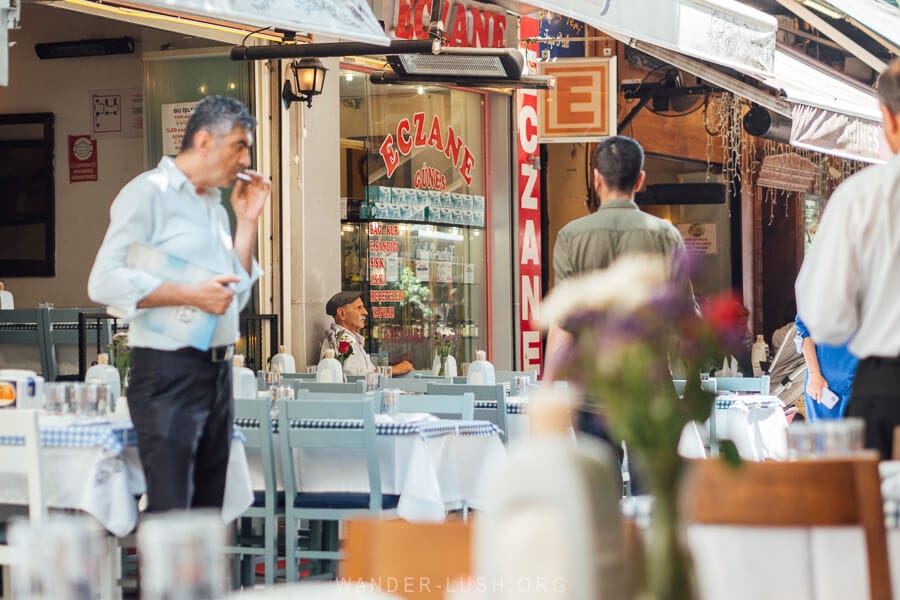
26. Don’t assume those meze plates are free
It’s normal for wait staff at a meyhane to present you with an attractive tray of small plates before they take your order. Turkish meze includes grilled eggplant with yogurt, fava beans, artichoke, and many, many more delicious bites designed for sharing over a bottle of raki.
Don’t make the mistake of assuming these small side salads are free – they are not. (Sides of chopped onion, herbs and chilli served in smaller silver dishes with kebab, on the other hand, are usually included in the price.)
27. Brace yourself for lots of uphill walking
They don’t call Istanbul the ‘City on Seven Hills’ for nothing. After a few days walking the streets, you might think the ‘city of seven million hills’ is a more apt nickname.
Constantinople was laid out in the image of Rome, which was of course built over a septet of hills. On the ground, it feels like all of Istanbul is rippled, with steep streets and vertiginous staircases at almost every turn. There are many advantages to this city plan, the delightfully sloped houses in Balat for one, and the spectacular city views you get from the higher elevations for another.
Comfy shoes and a whole lot of patience are absolutely essential when exploring Istanbul on foot, where it can literally feel like an uphill battle to get from one place to the next.
There are ways to avoid the slog, including using the funicular railways: Taksim-Kabatas and the historic Tunel that links Karakoy and Beyoglu. The latter is the world’s second-oldest subterranean rail line (after the London Underground) and the oldest still-operating underground funicular in Europe.
Istanbul travel tips to feel like a local
While it takes more than a three or four-day stay to feel like a fully fledged Istanbulite, here are a few little tricks to help you fit in.
28. Dress modestly to blend in
Istanbul is a metropolis through and through, with a liberal dress code to match. Almost anything goes, but I still recommend you cover up for comfort and to fit in with the crowd. Women should try to avoid plunging necklines, revealing fabrics, and very short hemlines.
There are noticeable differences between the European and Asian sides of Istanbul, with more modest dress and more hijabs worn in Uskudar compared to Eminonu, for example. Generally speaking, Turkey gets more conservative the further east you go, and this holds true even in the city centre. Keep it in mind if you’re travelling around the country.
One place you definitely must observe the dress code is mosques, where covered arms (to the elbow for men or the wrist for women) and legs (down to the ankles) is required. Women must also cover their hair. Majority of mosques have pull-over muumuus that you can borrow (for free) at the door to fully cover up. Note that there are no dress requirements for young kids.
It’s obligatory to remove your shoes when entering a mosque, so on days when you’re sightseeing, wear kicks that you can easily slip off and on. And if you prefer not to go barefoot, carry a pair of ankle socks in the bottom of your bag. Some mosques provide plastic bags, otherwise you can just leave your shoes outside.
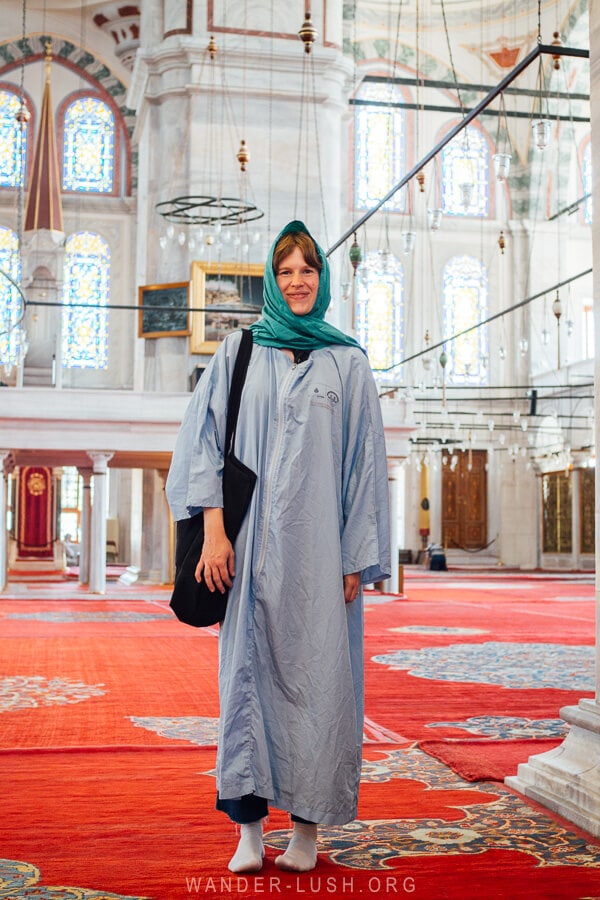

29. Never skip breakfast…
Breakfast is certainly the most important meal of the day in Turkey. Sunday breakfast is the queen of the morning meals, when the famous kahvalti tabagi ‘spread breakfast’ comes into its own.
On a Sunday, some Istanbulites spend the better part of the day between mid-morning and late afternoon gathered around the breakfast table with friends or family, noshing on an extravagant spread of cheeses, olives, cut vegetables and eggs served with supple somun bread. Kahvalti is a daily occurrence in places like Besiktast ‘Breakfast Street’ and in gourmet cafes such as Van Kahvalti.
If you’re on a tight timeline or a budget, breakfast doesn’t have to be drawn-out or expensive: There are faster and more affordable options, such as a pick-and-choose breakfast at Cakmak Kahvalti Salonu, where small plates range from 2-8 TRY each.
Borekcisi (borek bakeries) serve portions of steaming hot filled pastry and chai, or for a simple breakfast snack on the go, grab a simit bagel from a street vendor.
30. …But don’t order coffee first thing
Kahvalti means ‘before coffee’. Breakfast is traditionally accompanied by cay, strong black tea, rather than Turkish coffee. It’s normal to down half a dozen glasses of tea in a single sitting (though two or three is usually enough). Most sit-down kahvalti breakfasts come with two pots of tea.
If you want to do things like a local, save your Türk kahvesi for after lunch and start your morning with cay sade – strong and bitter tea with no sugar – instead.
31. Don’t be afraid to haggle at the bazaar
Haggling is customary and expected at markets in Istanbul and in other commercial settings. You’ll find that most items at the Grand Bazaar or Spice Bazaar have a price tag, but for those that don’t (and even for those that do), it’s quite normal to bargain for a better price. This is especially true if you’re buying more than one of something or multiple items from the same vendor. Rule of thumb is to aim for a 35-50% discount on the sticker price.
There are huge mark-ups at the Grand Bazaar, which seems to be almost exclusively the domain of tourists these days. There are local markets and street markets all over Istanbul where you’ll have a better chance of striking gold for a fair figure. Markets are held on different days of the week and following a rotating schedule, so you can always find something on. Popular food and flea markets take place in Karakoy (Tuesdays), Ortakoy (Thursdays), Uskudar (Fridays), and Besiktas (Saturdays).
If you do decide to brave the Grand Bazaar or another historic market in Istanbul, the best advice I’ve heard is to do your shopping in the mid-morning. It’s more likely that vendors have already made a few sales and met their daily commission targets, so there will be less pressure on you.
32. Don’t fall for the ‘shoe cleaner trick’
This one got us good.
One early morning we were walking down an alleyway in Besiktas when we heard a clack on the cobbles and noticed that someone had dropped a wooden shoe brush. Being the saint he is, my partner rushed to pick it up without a second thought and handed it back to the shoe cleaner whose caddy it had tumbled from.
Expressing his profound thanks, the guy promptly took a seat on the curb at our feet and insisted on shaking my husband’s hand in gratitude. That’s when he grabbed him by the wrist in a monkey grip and tried to pull him down for a coerced shoe cleaning. I should mention that he was wearing joggers, not leather shoes!
Neither of us were aware of this common scam at the time, so we thought the whole situation was quite hilarious. The man had a gorgeous smile and was very friendly – we actually gave him credit for this ingenious trick.
Only later when we heard about the scam did we realise what had (almost) happened to us. Ross managed to talk his way out of it, dirty shoes still intact.
We were not mad in the slightest, but it could have been a different story had we actually been talked into handing over cash. Keep an eye out for this trick, especially in touristy areas.
33. Embrace cat culture
There are up to a million cats and kittens living on the streets of Istanbul. Every cafe is a cat cafe, and every corner has its own posse of cute pusses. A picture-perfect clowder of cats lounging on fence posts and chairs like the princes and princesses they are awaits you at every turn.
Similar to street dogs in Georgia, the cats of Istanbul are regarded as community pets rather than strays and are fed and cared for by the locals. For the most part, they don’t bother people and keep to themselves. We definitely encountered a few fiercer felines on our travels – it’s pretty obvious which cats want pats and which ones need their personal space. They will let you know with a dagger stare or a hiss.
Cat culture can be traced back to Ottoman times, when tabbys helped to quash the city’s mice population. In this respect, cats are an inseparable part of the city’s social fabric.
If you’re an animal lover, it can be distressing to see so many cats living rough, especially when they’re not in the best shape. (Though I must say that every cat I met in Istanbul was plump and rosy.) It helps to know that Istanbul (and all of Turkey) has a no-kill, no capture policy.
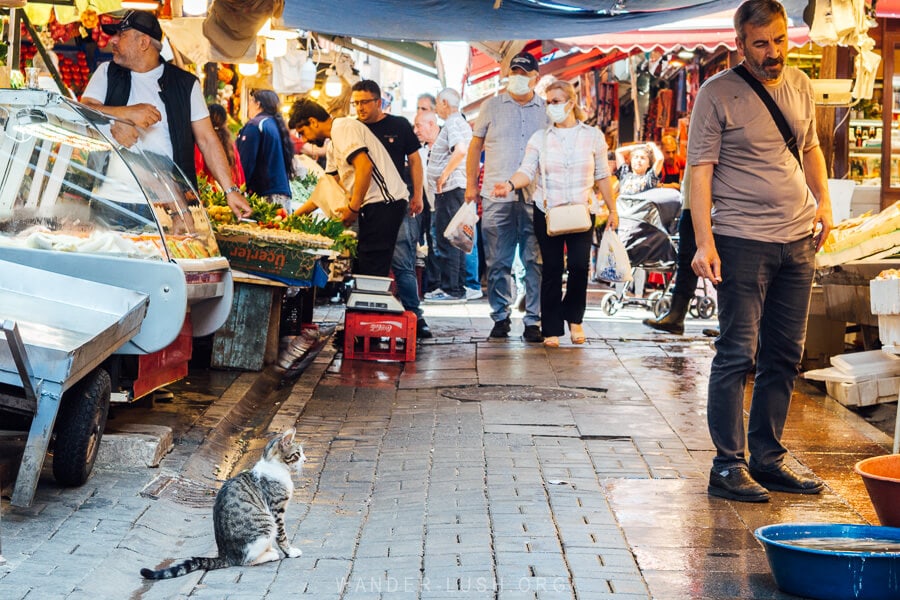
34. Brush up on your basic hammam etiquette
Partaking in a traditional Turkish bath is a must-do in Istanbul. The hammams have aeons of history and custom attached to them – there are definite dos and don’ts, just as there are with the sulfur baths in Tbilisi. It helps to know how to handle things once the towels come out, lest you embarrass yourself.
Regarding nakedness, men normally strip down to nothing while women wear undies (single-use pairs are supplied by most bathhouses) then don a pestemal towel, which stays wrapped around you for the duration of your stay.
The Turkish-style skin peel/massage (kese) can be quite rough on the skin and muscles. The therapist, known as a natir or tellak, will always be of the same gender. It’s customary to tip them 10-20% after your treatment.
For more Turkish hammam hints, see this guide.
More helpful Istanbul tips to make the most of your visit
Finally, here are a handful of practical tips for planning your itinerary and getting the most out of your time in Istanbul.
35. Organise your Istanbul itinerary by neighbourhood/district
Istanbul has 39 districts, each with its own character and appeal. From the Instagrammable houses and antique shops in Balat, to the trendy cafes in Cihangir, the rambunctious fish market in Uskudar to the Ottoman-era mansions in Arnavutkoy, every corner of the city has something incredible up its sleeve.
A great way to organise your time in Istanbul is by planning your movements around the different neighbourhoods. Each one is quite discreet, so you can knock out a to-do list before moving onto the next.
Some neighbourhoods naturally pair together thanks to geography and transport logistics: Galata and Karakoy, Fener and Balat, Uskudar and Kadikoy, Cihangir and Cukurcuma. See my Istanbul 4-day itinerary for more ideas on how to plan your visit by district.

38. Consider signing up for a food tour
One thing every Istanbul neighbourhood has in common is its never-ending supply of cafes, restaurants and street food vendors. One of the best ways to discover the city – especially if you’re on a tight timeline – is by signing up for a food tour.
I was lucky enough to join Culinary Backstreets’ Born on the Bosphorus tour during my most recent visit to Istanbul. It was one of the highlights of my trip – not only because of the delicious food, but mainly thanks to our incredible guide, Benoit, who over the course of a full day taught me so much about Istanbul’s food and beyond.
The popular Taste of Two Continents tour, with 11 food stops and a Bosphorus ferry crossing, is a good alternative if you’re looking for a half-day experience.
37. Get an early start to beat the crowds
This is particularly important in summer, when the touristy parts of the city get extremely crowded. One of the best ways to avoid long waits at landmarks such as Galata Tower is by waking up early and arriving as doors open.
The metro starts running at 6am – and from Friday evening to Sunday morning public transport operates 24/7 – so there’s no excuse not to get out in the early AM.
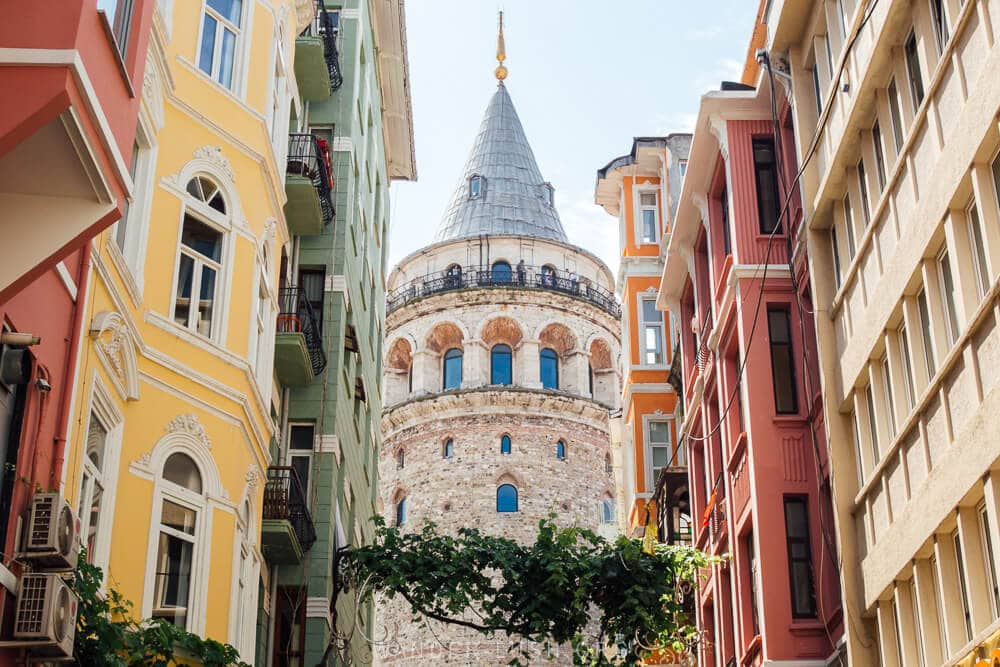
38. Invest in a Museum Pass or Istanbul E-Pass
There is a gamut of different tourist cards and passes available for Istanbul. The 5-day Istanbul Museum Pass or the 2-7 day E-Pass is one of the best investments you can make if you plan on doing the rounds through the city’s best museums and big attractions.
The digital pass gives you skip-the-queue access to 10 of the city’s finest cultural institutions, including Galata Tower, Topkapi Palace and the Harem, the Istanbul Archaeological Museum, the Museum of Turkish and Islamic Arts, and the Galata Mevlevihanesi Museum.
Available to purchase online before you arrive, it uses a simple QR code system. Just show your pass on your mobile – no need to print anything.
Only buy the pass if it makes sense for you, though: You have to visit multiple attractions for it to pay off, though the other perks – particularly the ability to skip the ticket line – are invaluable in a sense.
Purchase the official Istanbul E-Pass here via Viator.
39. Check prayer times in advance
The Blue Mosque and Hagia Sophia are both active mosques, open to visitors 24 hours a day, seven days a week. Except during prayer times, that is.
All of Istanbul’s mosques temporarily close to non-Muslim visitors five times a day for a period of about 90 minutes. For the duration of the Congregational Prayers, no tourists are permitted to enter.
It’s imperative to check prayer times in advance. If you show up while prayers are on, you will be met with a long wait outside. Times are signposted at the bigger mosques or you can check online.
The queue to enter the Hagia Sophia gets very long towards the end of the prayer session. The best time to visit is 30-40 minutes before the mosque is scheduled to close. Don’t try to visit on Fridays when the Jumu’ah prayer takes place – this is one of the busiest times, and it’s always crowded and chaotic.
If your Istanbul visit coincides with Ramadan or another Islamic holiday, prayer times might be different and mosques might be closed for longer periods during the day.

40. Skip the Bosphorus cruise – take advantage of local ferries instead
Some people opt to experience the Bosphorus on board a yacht at sunset with champagne and nibbles. If your budget won’t stretch that far, or you just prefer a local experience, then a ride on the public ferry offers the same ambiance and water views for a fraction of the price.
Hundreds of ferries criss-cross the strait, linking Istanbul’s Asian and European sides. The most scenic ferry routes include Besiktas to Kadikoy, Karakoy to Uskudar, and Karakoy to Kadikoy. Some boats go up the Bosphorus towards the Black Sea, and others head in the opposite direction towards the Princes’ Islands.
Bring a simit bagel to snack on (and to lure seagulls in for photos), or order a tulip-shaped glass of tea from one of the roving vendors on board.

41. Don’t miss the sunset from Galata Bridge
There is only one way to end a day in Istanbul in my opinion, and that’s by watching the sun go down from Galata Bridge. It might be touristy as heck, but there’s a good reason why this is such a popular spot. Views of the glittering water and intertwining boats, mosque minarets silhouetted against a dusky blue sky framed by fishermen casting their lines off the edge of the bridge, are absolute gold.
I recommend finding a spot to stand on the western side of the bridge, above the area where the Karakoy ferry docks. Aim to arrive about an hour before sunset for the best light.
For the perfect Istanbul photo, wait patiently for the garbage truck to come down the street and dump its load in the bins near the ferry terminal – this sends the seagulls into a frenzy, and they fill the skies with their spinning and diving for a good 15 minutes.
42. ‘Authentic’ Whirling Dervish ceremonies still exist – here’s how to find one
Speaking of Istanbul must-dos: A Whirling Dervish show is a bucket-list item for many. I was warned that all Mevlevi Sema ceremonies had become commercialised and ‘spoiled’ by tourists to the point where they just weren’t worth pursuing any more. So I made it my mission to find a real, ‘authentic’ Sema ritual in Istanbul, and I’m happy to say that I eventually did.
Get all the details about the best Whirling Dervish ceremony in Istanbul in this guide.
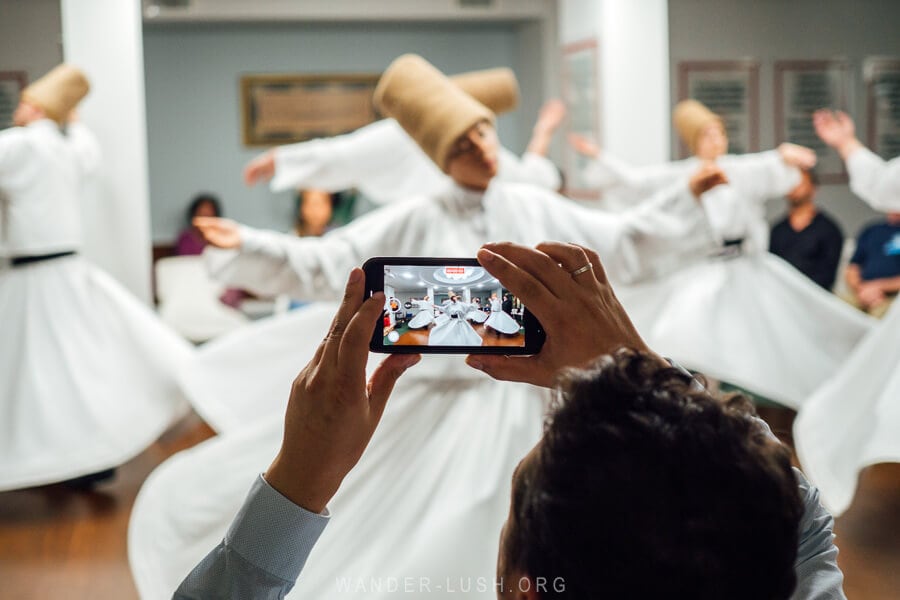
Where to stay in Istanbul
Budget: Hostel Le Banc (⭐ 9.5) – This popular hostel in Beyoglu is footsteps from the Galata Tower and Sishane metro station. It features air-conditioned rooms (private doubles and mixed/all-female 4 and 10-bed dorms), a shared lounge and a terrace.
Mid-range: 38 Hotel (⭐ 8.6) – Located in Sisli, close to Osmanbey metro station, this hotel has compact, tidy double rooms and suites.
Boutique: Hotel Empress Zoe (⭐ 9.2) – This gorgeous boutique hotel is decorated with heritage flourishes and boasts hammam-like ensuites and private internal terraces. The location in Fatih, minutes from Sultan Ahmet Mosque and the Blue Mosque, is very central yet the hotel still feels secluded.
Luxury: Ecole St. Pierre Hotel (⭐ 9.5) – Located in Beyoglu close to Galata Tower, this boutique-luxury hotel offers high-end suites with private courtyards and terraces. The building, an old Italian Dominican school with remnants of the 13th-century Galata walls inside its courtyard, is dripping with history.
Turkey essentials
Here are some of the websites and services I recommend for planning a trip to Turkey. Remember to check out my full list of travel resources for more tips.
FLIGHTS: Find affordable flights to Turkey using the Skyscanner website.
VISAS: Use iVisa to check if you need a tourist visa for Turkey and apply for an expedited visa online.
DOCUMENTATION: Use OneWayFly to obtain proof of onward travel/hotel reservation for your visa application.
TRAVEL INSURANCE: Insure your trip to Turkey with HeyMondo, my preferred provider for single-trip and annual travel insurance.
CAR HIRE: Use the Local Rent platform to hire a car from a local agent. Prices start from as little as 18€ per day.
ACCOMMODATION: Find the best Turkey hotel deals on Booking.com.
CITY TOURS & DAY TRIPS: Browse the Viator website to find the best itineraries and prices for Istanbul food tours, Cappadocia balloon rides and more!
More Istanbul travel resources
- 1-4 day Istanbul itinerary
- Istanbul travel budget
- The ultimate guide to eating out in Istanbul
- Tips for visiting Galata Tower for Istanbul city views
- The best Whirling Dervishes ceremony in Istanbul
- Guide to Arnavutkoy, Istanbul’s most beautiful district
- The best places to visit in Turkey
- Turkey in winter: Where to go plus travel tips
Detailed tips are super helpful, especially about the best time to visit and the ins and outs of public transport.
Thank you. Right now in Turkey with wife and kids. Following your steps and recommendations.
Just one thing: booking asked for a price but the hotel converted the price to Liras and charged me much more for exactly the same booking and service!
Thank you again,
I love your travel blog! Your vivid descriptions and stunning photographs make me feel like I’m right there with you. It’s inspiring to see someone embracing adventure and exploring new cultures. Keep the travel stories coming!
Excellent article and links for further information. I am planning a trip to Turkey in September with my wife and your articles a great start and support.
Great job!
Alejandro
This is very, very helpful. Thank you so much.
Early in your article you indicated that Booking.com does not work in Turkey, yet in the section, entitled “Turkey Essentials”, you direct us to that site for Hotels. Maybe I am missing something, but that appears to be contradictory. I found the article very helpful…..Thanks for the information.
JB
Hi JB – I still recommend using Booking, only you have to reserve from outside of Turkey ie. before you arrive.
Thanks so much, this was really helpful. Lots of good to know stuff that I didn’t find mentioned elsewhere
it was very helpful thank you
Ha, I made the same mistake again and didn’t read through your info thoroughly. In Georgia, I paid more than I needed to for a SIM at the airport and this time, I could have saved a few lira on a bank withdrawal in Istanbul.
Already appreciating the smiles and kindness in Istanbul very much.
Love your work Emily.
Perhaps it’s different for Australian passport holders, but I found the VOA to be a better deal than the eVisa for Americans. Our eVisas were fast and easy to get, but cost $50 plus a 2 dollar service fee. We got them before traveling to Turkey last year, but went twice to make them a better value. This past month we got VOA (no lines) and paid 25 euros each. Both are valid for 6 months. Plus you get a little visa stamp in your passport!
Thanks Owen for the info – you’re right, VOA is more affordable for US passport holders, but not for us Aussies unfortunately! I would have loved a visa stamp. I’ll update that now. Cheers!